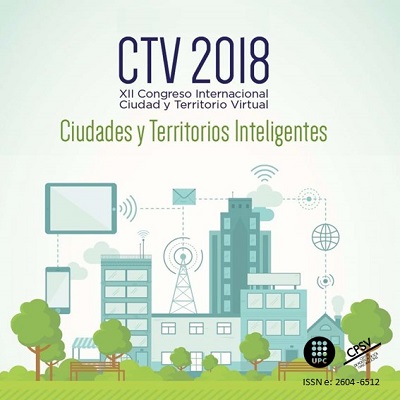Cold Island of the Urban Parks of Barcelona, Case Study of Turó Parc and Parc del Centre del Poblenou
DOI:
https://doi.org/10.5821/ctv.8253Keywords:
green spaces cool island, urban microclimate, ENVI-metAbstract
The urban parks cool island (PCI) effect is the reduction of temperature presented by the parks and their surroundings in relation to the continuous urban fabric that they are located. In contrast to the urban heat island effect (UHI), partly caused by the artificialization of surfaces, the parks commonly with a higher concentration of vegetation and permeable surfaces have lower temperatures and generate a cooling effect on their surroundings (Jauregui, 1990; Spronken-Smith & Oke, 1998; Kuttler, 2012). However, the propagation of this effect outside the perimeter of the park is defined by the relationship between its own characteristics and the microclimate of its surroundings, so recognizing the role of the attributes of these spaces in the PCI, is crucial in the generation of strategies to optimize this effect and contribute to the UHI alleviating. The present paper studies the relation between physical characteristics of urban parks and its cooling effect at small scale in two urban parks of the city of Barcelona: Turó Parc and Parc del Centre del Poblenou. With field measurements, remote sensing and outdoor thermal simulation, micrometeorological variables were recorded inside and around the parks during the day and night on a summer day. The intensity and reach of the cooling effect were calculated from the air () and surface temperature (). Then, by remote sensing methods and geographic information systems, the physical descriptors of vegetation, types of surfaces and building index at each measurement point are obtained. As result, Turó Parc recorded a reach of 80m outside its perimeter and Parc del Center del Poblenou 90m, as well as its highest PCI intensity in the during night, with 2.89 and 2.75°C respectively, values consistent with previous studies (Kuttler, 2012); and physical descriptors registered vegetation with the highest influence on temperatures. Last, conclusions highlight the potential of their design and location attributes in the optimization of the cooling island effect to help reduce the warming in the cities.
























